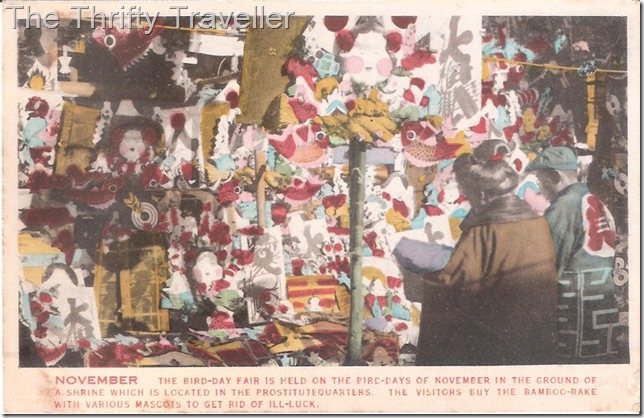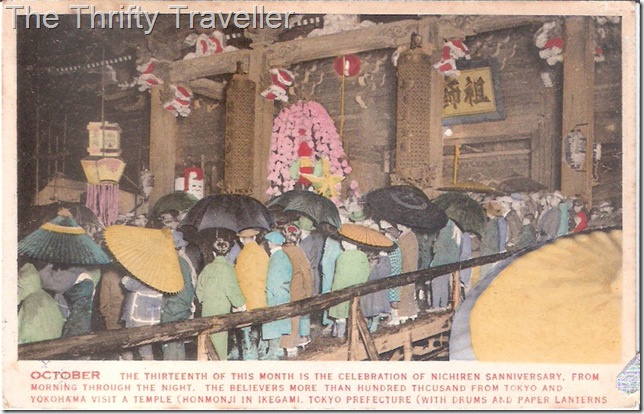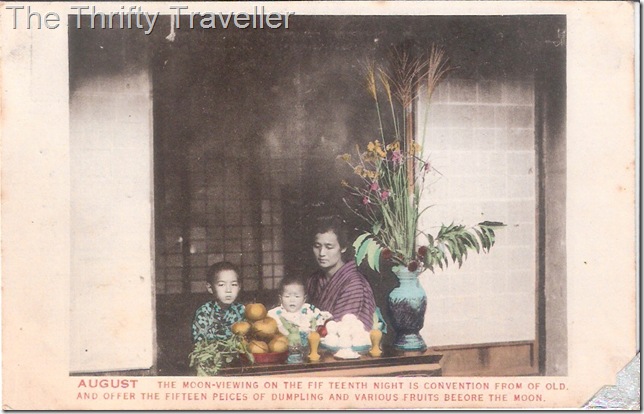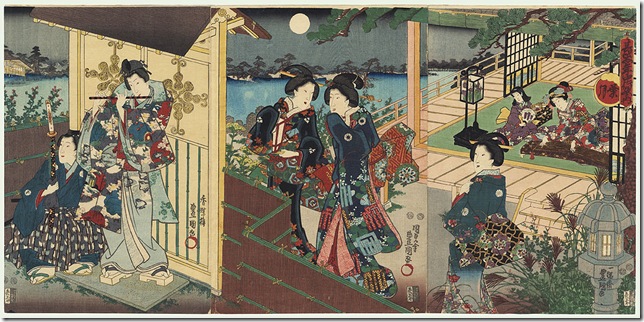Mochitsuki Festival. This postcard illustrates the traditional method of preparing mochi (glutinous rice cakes) which is re-enacted all over Japan during December.
Mochi is a popular delicacy all year round but is especially important for New Year celebrations. The origin of this practice is from a Shinto ritual of not cooking for the first three days of the New Year to provide an opportunity for the Shinto Kami (deity) to bless the kitchen. Mochi could be prepared in advance and eaten during those three days.
The traditional method of preparing mochi is to soak polished glutinous rice overnight before steaming it. Then it is pounded using a huge wooden mallet (kine) and a mortar (usu) made from a wooden stump or stone. People work in pairs, one doing the pounding while the other rotates the mortar and keeps the rice wet. Singing while working is customary. Good timing and teamwork is required to avoid getting hands injured by the mallet. It takes over an hour of exhausting pounding for the rice to reach the right consistency. That is why most mochi is made by machine these days.
Once the rice is the correct gooey elasticity it is moulded into the desired shapes, mostly cubes or balls. A range of traditional Japanese sweets are made from mochi often with fillings made from red or white beans.
This completes my series of Old Japan postcards, traditions, festivals and rituals. I hope you have enjoyed them. I leave you with a classic Japanese wintry scene.











